My ChatGPT Breakthrough Came When I Stopped Bossing It Around
The 4 stages that separate AI leaders from AI strugglers
Hey Adopter,
Your colleague has just been promoted to “AI leadership,” while your ChatGPT experiments produce subpar results. The difference is not technical knowledge. It is knowing which stage you are in.
Most managers are stuck in stage 1, treating AI like a fancy calculator when it could be their most valuable collaborator. Meanwhile, 66% productivity gains sit on the table because nobody recognises the evolution happening in plain sight.
What you’ll get from this edition:
A clear, four-stage model to diagnose your current AI stage
The mindset shift that moves you to the next stage
Where the real productivity gains live, with examples
When I began outlining my first book with AI, I tried to force a structure and have the model fill blanks. Results were flat. The breakthrough came when I held a proper conversation with the AI about the target reader, their concerns and frustrations, and the outcomes they cared about. We built the outline from that dialogue. Everything sharpened.
Stage 1: Machines as Tools
The Command-and-Response Era
This is where most managers live. Machines execute commands without feedback. You tell it what to do, it does exactly that.
Think early manufacturing systems. Input schedule, get output. Excel formulas. Type formula, get calculation. Classic software where you click a button and receive a result.
The manager’s role here is simple: command giver. Your mindset becomes “I tell it what to do, it does exactly that.” The impact is predictable but limited. No surprises, no suggestions, no challenge to weak assumptions.
Lisa, a marketing manager, pastes a lump of customer comments into an AI and types, “Summarise this.” She gets a bland list of frequent words. No themes, no drivers, no actions. She never asked the AI to hunt patterns, test hypotheses, or propose next steps. Pure stage 1.
Stage 2: AI as Assistants
The Early Conversation Phase
Limited conversational AI that responds to structured queries. You can ask questions, but you must be specific.
Remember early Siri asking you to repeat yourself. First chatbots with scripted branches. Keyword search that only matched exact terms.
It feels like progress from stage 1, but the improvement is marginal. The productivity lift is real yet small. Your mindset shifts to “I can ask questions, but I must be very specific.” You become a question asker with limited expectations.
Most corporate training stops here. “Write better prompts.” “Use these 50 templates.” The bigger shift gets missed entirely.
Stage 3: AI as Collaborators
The Current Revolution
AI engages in meaningful dialogue and proposes alternatives. Your mindset shifts dramatically: “This feels like working with a smart colleague.”
Examples from teams making the jump:
Coca-Cola uses AI that suggests creative directions, not only executes briefs.
Slack’s AI analyzes workflows and proactively suggests improvements.
Octopus Energy handles 44% of customer service with satisfaction that beats human-only handling.
I asked an AI to map a 10-year plan to afford a P-51D Mustang. It produced a granular, day-by-day roadmap that tells me which levers to move each day. Not a list of tips. A living plan. That arrived once I treated it as a co-planner, not a task runner.
Your role shifts from command giver to collaborative partner who guides, tests, and refines in working sessions.
Stage 4: AI as Autonomous Agents
The Emerging Future
AI identifies problems and acts within guardrails. It does not wait for your prompt. It spots issues first.
Your mindset becomes “AI is handling entire workflows without me.”
Examples:
McKinsey deployed agents that reduced client onboarding by 90% by finding and fixing bottlenecks proactively.
Amazon runs agents that upgrade large fleets of Java applications, making architecture decisions inside defined parameters.
Pets at Home uses AI that compiles cases for review, driving seven-figure savings by deciding what needs attention.
This represents more than efficiency gains. It’s a complete redefinition of management.
AI detects, decides, executes multi-step workflows, then reports with recommendations.
Your role transforms again from collaborative partner to strategic overseer who sets parameters and reviews outcomes. You are no longer managing tasks. You are managing intelligence.
The Real Insight
Winners are not just changing tools. They are evolving from transactional to strategic management, from commanding to collaborating.
Most managers cannot name their stage. They apply stage 4 tech with stage 1 thinking, then wonder why results disappoint.
This evolution is not only about AI. It’s about management itself. The leaders who pair human judgment with machine capability will solve problems neither could handle alone.
The question is not whether AI will change how you work. It’s the stage you will stay in while others move ahead.
Adapt & Create,
Kamil



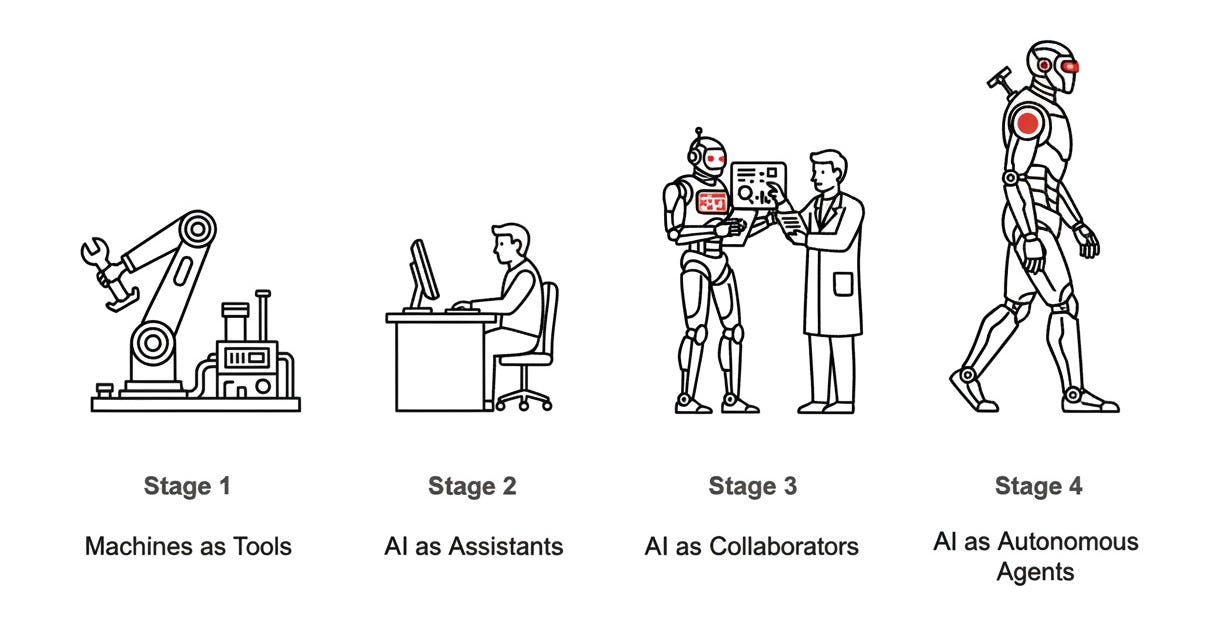
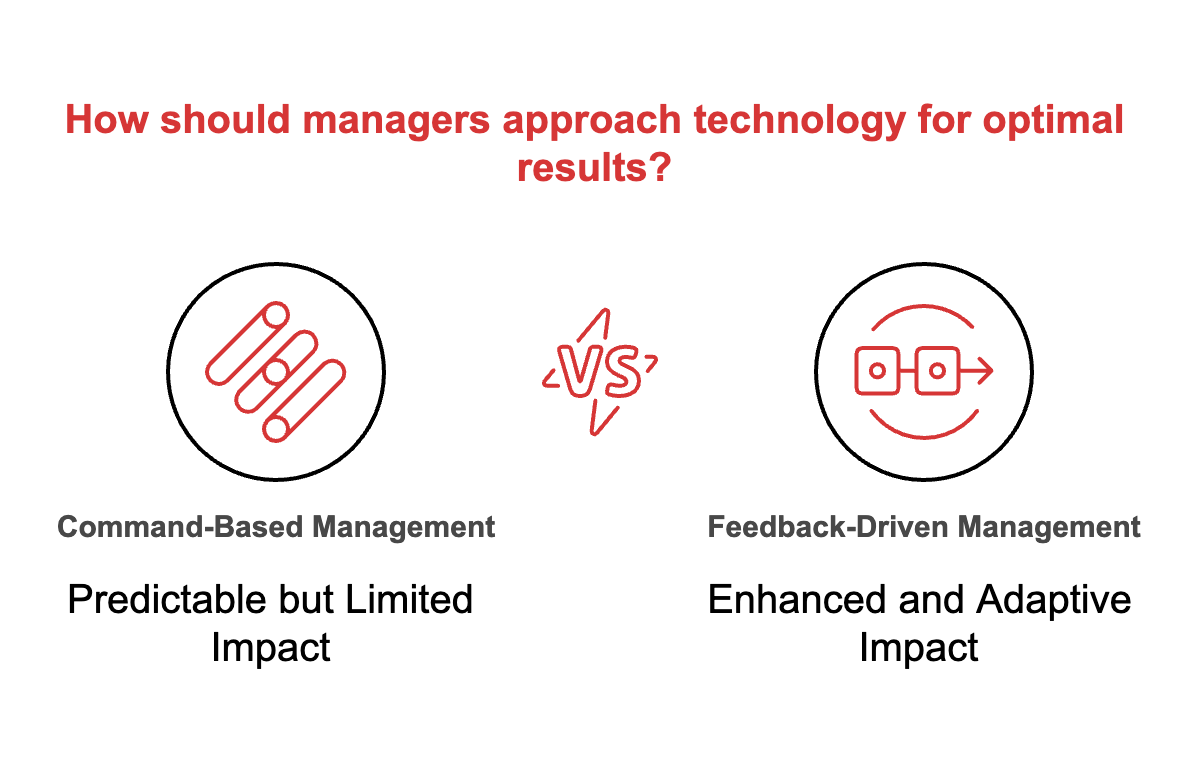
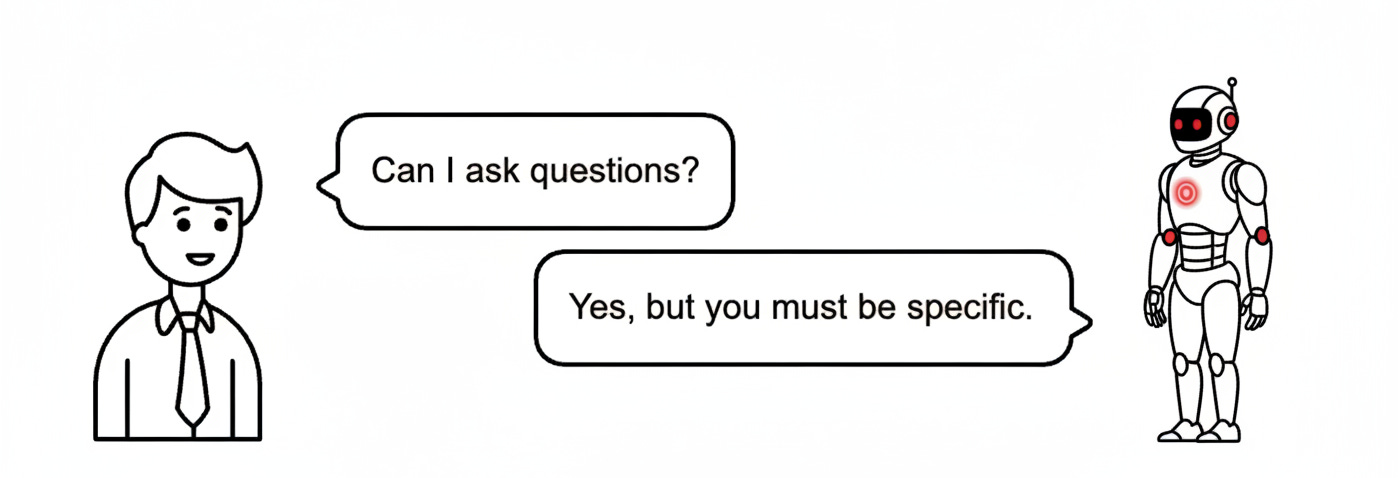

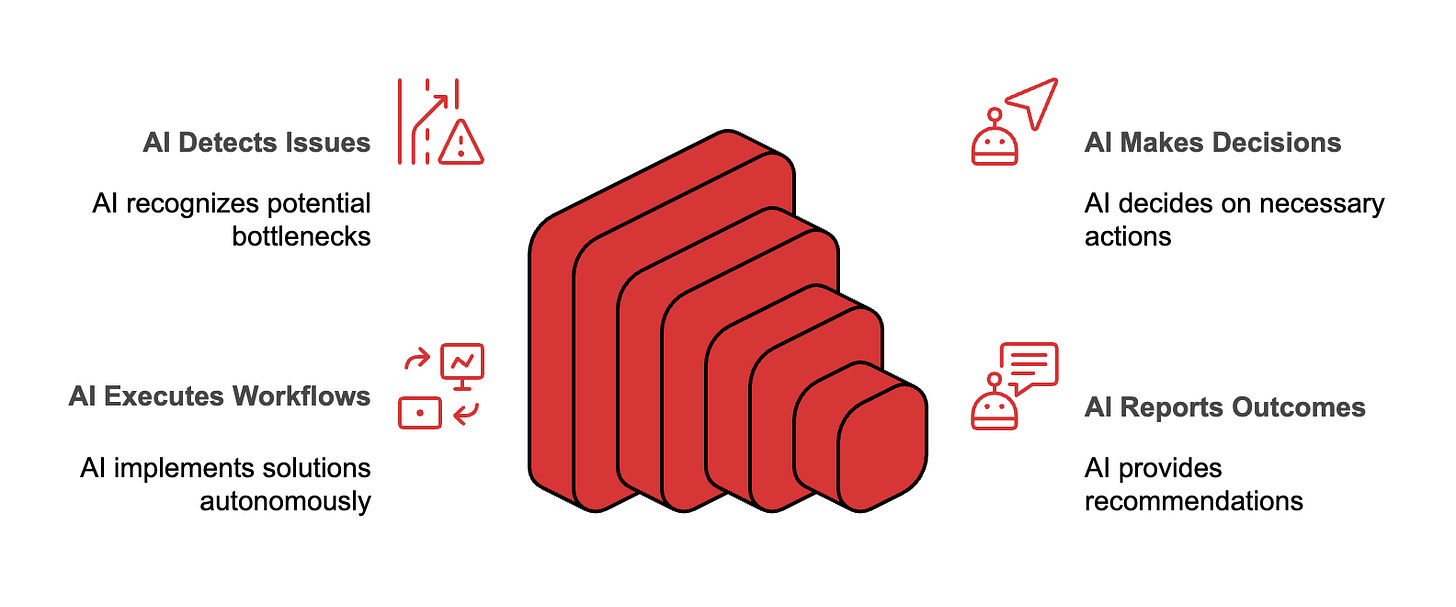
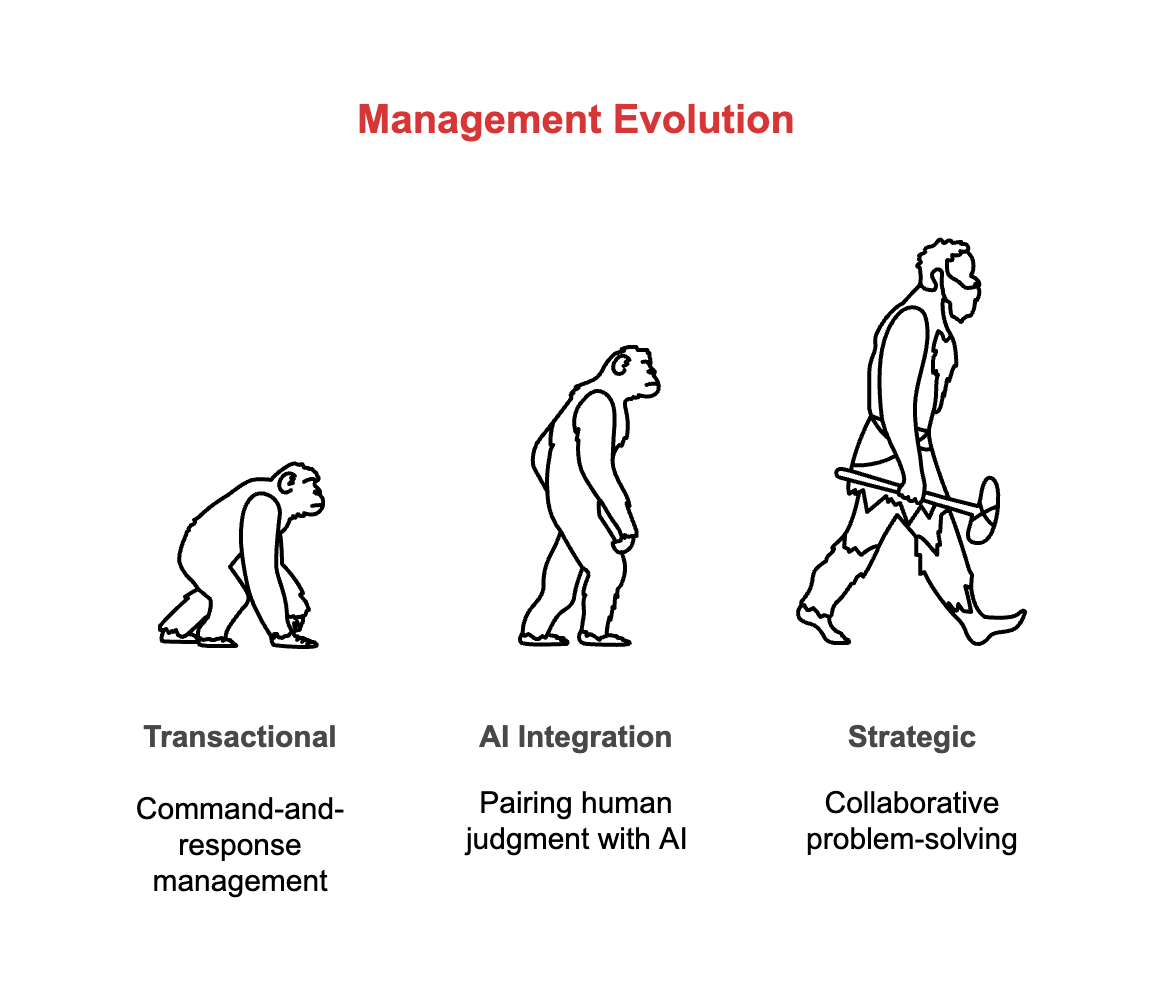
Be nice to it. Because when AI takes over the world, it may decide to let you live. 😀
My biggest leap came when I stop treating AI like a machine waiting for orders and started engaging with it like a thinking partner. The conversation sharpened ideas and pushed the work into places I didn’t get to alone. Those who understand this shift will gain greater benefit than those still clinging to command-and-response habits. Trust in the collaborative process that is available.